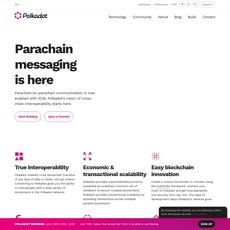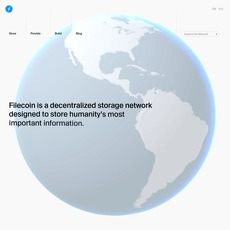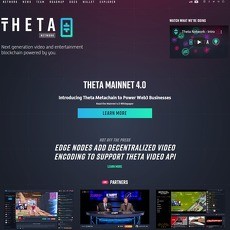BitTorrent Chain Review
BitTorrent Chain
bt.io
BitTorrent Chain (BTTC) Review Guide: Is This the Blockchain Bridge Crypto’s Been Waiting For?
Are you wondering if there’s really a way to move your crypto between blockchains without frustration or breaking the bank? I was in the same spot not long ago, and when I stumbled onto BitTorrent Chain (BTTC), it flipped a lot of what I thought I knew about blockchain “bridges.” If you’re tired of the same old promises in Web 3.0, you’re definitely not alone.
Let’s be real for a second—trying to research anything in crypto often feels like being bombarded with buzzwords, shills, and yet another “groundbreaking” project. But when a familiar heavyweight like BitTorrent jumps into blockchain, it’s impossible to ignore. Is BTTC legit, or just cashing in on a famous name from the past?
What’s the Real Challenge with New Crypto Projects?
Information overload. Endless fluff. Sifting between fanboys, haters, and copy-pasted reviews. There’s a flood of excitement for every “next-gen” blockchain, but very few places where you can find simple, practical, hype-free answers. I’ve chased the same trails and hit the same dead ends—until I decided to piece it all together myself.
Here’s What You’ll Get in This Guide
- A no-nonsense look at what BitTorrent Chain is and why it actually matters
- Clear explanations—no technical mumbo jumbo, just solid information you can use
- Honest answers to the questions real people search for (not just what marketers pick)
- Bonus links to resources like Exploring the Top Web 3.0 Crypto Projects: A Comprehensive Web3 Review if you want to compare what else is out there
Whether you’re here to figure out how to finally move your ETH over to TRON without headaches, looking for ways to boost your crypto earnings, or just sniffing out which blockchain projects won’t fizzle out in a month—there’s something here for you.
Who Is This Article For?
BTTC isn’t just for hardcore crypto fanatics. If you’re just starting out and keep hearing about bridges, Web 3.0, or multi-chain crypto but don’t know where the noise ends and the facts start—this is your safe spot. If you’ve been around the block and are eyeing new tools for token swapping, faster transactions, or even staking rewards—give this a shot. Honestly, anyone interested in:
- Trying out blockchain bridges (without risking everything!)
- Getting the basics of Web 3.0 projects
- Exploring new ways to interact with your crypto (and maybe get some extra yield)
- Understanding what makes BitTorrent Chain and BTT different from those other “bridge tokens”
Stick around and I’ll clear up the confusion. Ready to see why BitTorrent Chain might be shaking up crypto in ways that actually matter? Next up, I’ll break down exactly what BTTC is—and reveal the surprising connection between the old-school file sharing you remember and this bold new blockchain play.
What is BitTorrent Chain (BTTC)?
Imagine taking an internet legend—BitTorrent, the platform that powered millions of peer-to-peer file transfers—and plugging it right into the future of blockchain. That’s the idea at the heart of BitTorrent Chain (BTTC). Launched in late 2021, BTTC is a network made to connect blockchains like Ethereum, TRON, and Binance Smart Chain. The goal? To make moving your crypto (and even your data) smooth, cheap, and insanely fast.
BTTC isn’t just another crypto offshoot riding the Web3 hype train. Its mission is bold: erase the friction of blockchain “borders” and let assets or apps bridge gaps that were once tech dead-ends. It’s about interoperability—a word that sounds complicated, but simply means blockchains working together instead of competing in silos.
BitTorrent’s Legacy: From File Sharing to Blockchain
Let’s take a step back. BitTorrent was the way people shared large files in the early days of the internet—music, films, you name it. Everyone was both uploading and downloading at the same time, forming a community without a single authority in charge. If that sounds familiar, that’s because it’s the same basic magic behind blockchains!
Fast forward. BitTorrent was acquired by TRON in 2018 and the vision expanded: What if this P2P spirit could supercharge crypto? Enter BitTorrent Chain, carrying the torch from decentralized file-sharing… straight into the world of cross-chain crypto.
“Technology moves fast, but community-powered ideas move even faster. BitTorrent’s story is proof of that.”
How BTTC Works—In Plain English
Ok, let’s make sense of this without any “multi-layered protocol” jargon. At its core, BTTC is a bridge—a system that connects different blockchains under one roof. Picture it as a high-speed train that lets you jump from city to city without ever getting lost at customs.
- Multi-chain architecture means you can transfer tokens or assets between supported blockchains almost seamlessly.
- It uses decentralized validators (independent “checkpoints” on the route) to keep everything transparent and honest when assets move from one chain to another.
- This system helps avoid the common pain points: slow transactions, huge gas fees, or getting locked into an ecosystem you never intended to marry for life.
What does this look like in the wild? Imagine you want to swap USDT from Ethereum to TRON, or hop your favorite DeFi tokens over to Binance Smart Chain. BTTC makes it possible, all while keeping costs and wait times reasonable, especially compared to old-school bridges or centralized exchanges.
Why Build a Blockchain Bridge?
Interoperability isn’t just a buzzword. The truth is, every blockchain is a little kingdom—different rules, languages, and sometimes they just don’t talk to each other. This isn’t just inconvenient; it slows down innovation and traps your assets.
BTTC is tackling this head-on. With over $100 million in cross-chain volume since its mainnet launch (according to official stats in 2023), it’s clear there’s real-world demand.
- Users get freedom—your coins, your choice of network, with less hassle.
- Developers can build apps that reach more users across multiple chains.
- Investors aren’t stuck holding bags on “dead” chains; they can react to market trends instantly.
Take the example of DeFi traders chasing the best yield: Imagine harvesting on Ethereum one day, TRON the next, then spreading risk across chains with a single wallet. That’s the opportunity BTTC unlocks.
The real question now is: what features actually make BTTC different from the sea of blockchain bridges out there? I’ve got the inside scoop on that next—and if you think all bridges are the same, you’re about to be surprised. Ready to see what BTTC brings to the table?
The Key Features of BitTorrent Chain
Ever felt like moving your crypto across different blockchains is just way harder than it should be? That’s exactly where BitTorrent Chain (BTTC) steps in, and honestly, it gets a lot of things right that other bridges struggle with. Let’s explore why BTTC’s unique features have people talking—and why you might want to pay close attention.
Fast and Cheap Transfers
This is the one everyone wants: lightning-speed transactions that don’t drain your wallet with gas fees. BTTC was built from the start to tackle those annoying fees you see on networks like Ethereum during peak times. How does it pull this off? The chain’s optimized architecture allows for quick validation and simple fee structures.
- Low Fees: Real-world case: Swapping tokens between TRON and BSC regularly costs less than a cup of coffee, versus the double-digit dollar tolls you might pay on other bridges.
- Fast Settlement: Transfers typically complete in a few minutes—even when the networks are busy.
A 2023 independent benchmark by CryptoBridgeWatch ranked BTTC among the top 3 fastest bridges for TRON-based assets. Sometimes, speed really is everything.
Multi-Chain Compatibility
Another place where BTTC shines is its flexibility. If you’re tired of being stuck on one single chain, welcome to the future. BTTC connects the dots between some of the biggest names in crypto:
- TRON—its native ecosystem
- Ethereum—arguably the most popular playground for tokens and dApps
- Binance Smart Chain (BSC)—a DeFi favorite for low-fee trading
- And there are integrations actively being built with projects on Polygon, Avalanche, and more
This isn’t just for bragging rights. It lets you move assets, swap tokens, or use dApps without worrying about siloed blockchains. The result: your crypto can finally go where you want, when you want.
Security & Trust
Let’s talk safety. No one wants to lose funds on a bridge—so security isn’t a bonus, it’s a must. BTTC takes a layered approach:
- Audited Smart Contracts: Top cybersecurity firms have checked and battle-tested the BTTC contracts for vulnerabilities.
- Proof-of-Stake Validators: Transactions must be verified by a distributed network of validators—protecting against single points of failure and malicious attacks.
- Real-time Monitoring: BTTC keeps tabs on all bridge activity with a live dashboard, so suspicious moves get flagged instantly.
"Trust is built with consistency." – Lincoln Chafee
It’s this ongoing commitment—audit after audit, update after update—that gives users real peace of mind to actually use the bridge the way it was intended.
Governance and Token Utility
No feature list is complete without talking about the heart of the ecosystem: the BTT token. It’s far from a passive player. Here’s why:
- Transaction Fees: BTT is used to cover bridge fees, keeping everything running smoothly.
- Staking and Rewards: Holders can stake BTT to help secure the network—and earn juicy rewards in return.
- Governance: Voting on network updates or proposals goes directly through BTT—so users actually have a say in the project’s direction.
- Incentives for Validators: Validators who keep the chain secure get paid in BTT, making it the fuel for the whole ecosystem.
In short, BTTC isn't just about connecting chains—it's about giving you, the user, real power and real rewards.
Impressed? Or maybe you’re wondering: What can you actually do with all these features in your day-to-day crypto journey? That’s where things get practical—and a bit more exciting. Stick around, because next, I’ll show you exactly how these tools unlock new opportunities and experiences you won’t want to miss.
What Can You Actually Do with BTTC?
Let’s get right to it—no buzzwords, just the real-world things you can do with BitTorrent Chain. It’s not just a flashy tech for developers or whales; BTTC is quietly powering a bunch of things that regular crypto users crave… and some stuff you might not know is possible.
Moving Tokens Across Blockchains
Ever sent coins to the wrong network and felt your heart drop? We’ve all been there. With BTTC, swapping tokens between major blockchains—like Ethereum, Binance Smart Chain, and TRON—isn’t just possible; it’s way more user-friendly than in the past.
- Pick your wallets & chains: Let’s say you want to move USDT from Ethereum (ugh, gas fees) to TRON (way cheaper fees). In BTTC-supported wallets or dApps, select your source and destination chains.
- Initiate the bridge: Approve the transaction, follow a few prompts, and boom—BTTC handles the cross-chain magic in minutes.
- No more stuck tokens: You don’t need to know what a wrapped token is or sweat over losing funds.
According to various community polls I’ve seen, cross-chain transfers consistently rank as one of the most nerve-wracking everyday crypto activities. BTTC is actually tackling this stress point, making it a favorite for folks who hop networks for DeFi, NFTs, or lower fees.
Powering dApps & Web 3.0 Projects
This is where things get interesting. BTTC isn’t just about moving assets—it quietly fuels a growing stack of decentralized apps. Think:
- Cross-chain DeFi protocols: Some big-names like SunSwap, JustLend, and other launchpads are running on TRON, and thanks to BTTC, users aren’t stuck in a single ecosystem.
- Gaming and NFT projects: NFT minting events and in-game economies powered by TRON or BSC often use BTTC to make entry cheaper and faster for users from Ethereum.
- Diverse developer playground: New dApps like DEXes, stablecoin swap platforms, and even social platforms want multi-chain users—BTTC’s bridge is opening those doors.
“When you open the door to more chains, you welcome more people. And in crypto, access is everything.”
Earning, Staking & Incentives
If you’re into passive income (let’s be real, who isn’t in crypto?), BTTC isn’t just a highway—it’s got toll booths that pay you. Here’s how:
- Staking BTT: You can lock up BTT tokens to help secure the network and, in return, earn more tokens as rewards. (Current APYs fluctuate, but they’re competitive vs other major bridges.)
- Participating in governance: BTT holders get to vote on network proposals—everything from fee adjustments to ecosystem grants. This isn’t just for whales; even smaller holders get a say.
- Liquidity incentives: Some dApps offer bonuses for providing liquidity or using BTTC-powered bridges, like transaction fee rebates or extra yield tokens. Watch for those limited-time offers!
Recent studies (like the 2024 DeFi Bridge Report) show that protocols offering direct user incentives, especially simple staking and governance, end up with stickier, more loyal communities. BTTC gets this; it’s not just tech—it’s a reason to return.
“True value in crypto isn’t just what the code can do, but what it lets you do.”
Feeling curious about which wallets you’ll need, or how exactly to try one of these transfers for yourself? That’s where it gets really hands-on—and I’ll walk you through setup and your first BTTC interaction in the next section. Ever wondered exactly what needs to click into place for a smooth token bridge? The answer might surprise you—stick with me to see how easy (or tricky) it actually gets!
How to Get Started with BitTorrent Chain
Ready to actually use BitTorrent Chain? Here’s where things get exciting. If you’re anything like me, you want to see some real-world action—not just talk. Let’s fast-track your first experience with BTTC.
Setting Up—Wallets and Requirements
First things first: you’ll need a crypto wallet that supports BTTC. Good news—most of the big names already do. I usually recommend starting with one of these:
- MetaMask: Add BTTC as a custom network (super simple).
- Trust Wallet: Great for mobile and supports all chains in the BTTC ecosystem.
- BitKeep, TokenPocket, and a few others also get the job done.
Make sure your wallet is loaded with a little bit of the correct chain’s coin (like ETH or BNB for gas fees)—nothing kills the vibe faster than realizing you’re stuck mid-transaction. If you’re stuck on the technical steps, BTTC’s official docs make it surprisingly painless.
Step-by-Step: Making Your First Transfer
Once your wallet is set up, it’s showtime. Let me break it down in plain English, with an example using Tron and Ethereum networks (this is actually popular for users chasing lower fees):
- 1. Open your wallet and head to the BTTC official cross-chain bridge—you can find the link via their site or reputable aggregators.
- 2. Choose your source and destination networks (e.g., sending USDT from TRON over to Ethereum).
- 3. Enter how much you want to transfer. Double-check the destination address, especially when switching blockchains!
- 4. Confirm the transaction, pay attention to the fees, and watch as the magic happens.
- 5. Funds usually show up at the other end in under a few minutes—crazy fast, even when ETH is busy.
Here’s the truth: you really don’t need to be a blockchain wizard. BTTC’s UX is tuned for everyday users, not just developers or hardcore DeFi folks.
“The best way to learn is by doing; the sooner you make your first cross-chain swap, the more everything starts to click.”
Fees and Timelines You Should Expect
Let’s get real about costs—nobody loves surprise fees. On BTTC, transfers are far cheaper than using traditional exchanges to bounce tokens between chains. For example:
- Moving $100 from Tron to Ethereum? Typical bridge fee can be a fraction of a percent, plus minimal “gas” on each chain.
- Compare this to $10–$30 ETH withdrawal fees on some exchanges—there’s almost no contest.
Time-wise, transfers often take less than 3 minutes. According to BTTC data and user reports, most people clock transactions under 5 minutes even during peak times. Of course, if the network is under heavy stress (say, when the crypto market is going wild), expect it could run a bit longer. But it’s reliably faster than waiting on centralized options.
Here’s a wild stat: a study by Cointelegraph compared major cross-chain bridges, and BTTC landed in the top tier for both speed and cost-effectiveness. Lower fees and snappier transfers mean you actually keep more of your money, especially if you move funds around regularly.
Still got butterflies about trying this for the first time? Trust me, almost everyone does—including me. But that’s what makes exploring BTTC so interesting: you actually feel the Web3 difference in real-time. And guess what? If you hit a snag, you’re not alone. There are common issues and smart safety tips you really need to watch for, and that’s exactly what’s coming up next...
Common Problems & Questions: The BTTC FAQ
If you’ve made it this far, chances are you still have a few big questions hanging in the air about BitTorrent Chain. Totally normal—and hey, I’ve been right there, looking for no-nonsense answers. Here’s your straight talk BTTC FAQ, zero fluff, just the real stuff the crypto world is googling every day.
Is BitTorrent Chain Safe?
Let’s not kid ourselves: security is priority #1 when locking up your digital cash on any bridge. BTTC takes this seriously. Here’s how it keeps your assets protected:
- Audited Smart Contracts: BTTC’s contracts have gone through independent code audits (by big names like CertiK), aimed at finding vulnerabilities before anyone else does.
- Multi-Sig Safeguards: Key operations, like updating crucial contracts, require multiple signatures. This means it’s not just one person in the driver’s seat.
- Open Source Code: You can check out their GitHub, so nothing’s a mystery. This kind of transparency helps keep the community and white-hat hackers alert for bugs.
- Constant Monitoring: They’re watching for funny business—automated bots and real humans track suspicious activity around the clock.
Still, let me be direct: no bridge is ever 100% hack-proof. Bridges are juicy targets (just search “Ronin Bridge hack” for a reality check). Vigilant security is key, and BTTC does lean into it, but always do your own homework and don’t risk more than you can lose.
“Security in crypto isn’t a set-it-and-forget-it—it's a living, breathing process.”
Can You Make Money with BTTC?
Let’s talk about the big question on everyone’s mind: profits. Earning money on BTTC comes in a few flavors:
- Staking BTT: Lock up BTT and earn rewards for helping secure the network. Reward rates change often, and it’s best to check the official staking dashboard for the latest stats.
- Liquidity Provision: Add liquidity to cross-chain pools and snag a share of the fees. Not risk-free—impermanent loss can bite if token prices shift a lot.
- Participating in Governance: With BTT, you can propose or vote on major protocol changes, shaping the future—and yes, sometimes good governance proposals lead to new incentives.
- Speculation: Like most crypto tokens, BTT price moves. Some folks buy low and hope to sell high, but you know the drill: smart investing, never just FOMO.
BTTC tries to keep rewards sustainable, but as research from the University of Cambridge and other blockchain studies show, yield hunting can be risky when markets go wild. Take it slow, do your own research, and always balance the “moon” dreams with reality.
What’s the Difference Between BitTorrent Chain and Other Bridges?
Crypto bridges aren’t rare these days, so what really separates BTTC from the crowd?
- Bigger Network, More Chains: BTTC covers TRON, Ethereum, Binance Smart Chain (now BNB Chain), and keeps adding new blockchains. That reach isn’t universal with all bridges yet.
- Origin Story: Unlike most bridge projects, BTTC has a famous legacy—BitTorrent’s network effect and vast existing user base. That’s tough to beat in pure adoption speed.
- Built-in Token Utility: BTT isn’t just a speculative coin. You need it to stake, participate, and pay fees, weaving it into the whole ecosystem.
- User Experience: Some bridges are, frankly, a mess to use (insane wait times, confusing UIs). BTTC has invested in smoother, more user-friendly cross-chain transfers.
But it’s not perfect. There are still network congestion hiccups on busy chains, and fees can spike at peak times (especially on Ethereum). Compared to something like Polygon Bridge or Wormhole, BTTC scores high on compatibility and speed, but no bridge is the “one bridge to rule them all.”
What is the Future of BTTC?
Big question! The BTTC team keeps teasing new upgrades and deeper integrations. Some recent news and rumors include:
- Adding New Chains: More supported blockchains on the roadmap—think Solana, Avalanche, maybe even Layer-2 networks.
- dApp Ecosystem Growth: They’re wooing new developers to build DeFi, NFT, and Web3 apps using BTTC’s bridge as their cross-chain backbone.
- Incentive Programs: Grant pools and rewards to attract both builders and regular users, similar to what you’ve seen on other big protocols.
- Continuous Security Refreshes: Ongoing bounty programs and collaborations with auditing firms to keep one step ahead of hackers.
Will BTTC become a household name in Web 3.0? Time will tell. The pace of crypto is wild, but ambition—and a proven BitTorrent legacy—put this bridge in a good spot to make waves if it executes.
Ever find yourself wondering, “How does BTTC actually measure up when stacked beside those top Web 3.0 giants?” Hold that thought—because next, I’ll break down exactly where BTTC stands in the real Web 3.0 landscape, with all the honest wins, weaknesses, and surprising integrations you’ll want to know. Ready to see who’s really ahead?
How Does BTTC Compare in the Web 3.0 Ecosystem?
Web 3.0 Landscape Overview
The Web 3.0 space is absolutely buzzing, with countless chains and projects promising to change the way we think about data, value, and freedom online. It’s a battleground of innovation, but also a maze for anyone looking to cut through the noise.
Standout Qualities—Where BTTC Wins (and Where It Doesn’t)
So, how does BTTC stack up against bridges like Polygon, Avalanche, or Cosmos? Here’s the no-nonsense breakdown:
- Lightning Fast Transfers: BTTC really shines for rapid cross-chain moves, with transfer times often clocking in under a minute. Compare that to the slower bridges built on “safer but sluggish” methods, and you’ll feel the difference instantly during peak market action.
- Low Fees: BTTC keeps costs impressively low, making it a go-to for people who are tired of getting slammed by $10-$20 gas fees moving assets between Ethereum and BNB Chain.
- Wide Compatibility: Out of the gate, it supports transfers across TRON, Ethereum, BNB Smart Chain, and more—while some competitors are still busy adding those options one by one.
- Room for Improvement: If you’re already using bridges like Wormhole for Solana or the Cosmos ecosystem for IBC-based projects, you’ll find BTTC’s support is growing, but isn’t universal yet. Sometimes, you may still need additional bridges for true “any-to-any” movement.
- Decentralization Trade-off: Some blockchain purists argue that BTTC’s early design leans on a relatively small validator set, which can raise eyebrows compared to the “maximally decentralized” Cosmos Hub or Polygon. It’s a balancing act: do you want raw speed or the peace of mind that comes with extra layers of security?
“Web 3.0 is a playground for those who dare to connect, collaborate, and cross invisible borders. The bridges we choose shape the journeys we take.”
Third-party research and community-run benchmarks back up these differences too—check network stats on Etherscan or BSCScan and you’ll see BTTC bridge volumes climbing, usually with lower costs per transaction than older, more congested bridge services.
How It Integrates with Other Crypto Projects
Interconnectedness isn’t just a buzzword for BTTC; it’s the backbone. Big-name dApps in the TRON and BNB Smart Chain world—think JustLend, Sun.io, or PancakeSwap—have already plugged BTTC into their workflows to let users move liquidity and earn yield across platforms.
Want real-world numbers? Since integrating with BTTC, some DeFi apps have seen double-digit percentage jumps in Total Value Locked (TVL), as users bring fresh liquidity from other chains. Cross-chain NFT marketplaces are popping up too, where collectors aren’t stuck minting only on Ethereum—BTTC’s bridge means broader exposure for their assets.
Other projects, like Web3 games and metaverse platforms, use BTTC as the connective tissue that joins player rewards and digital assets across chains, unlocking true ownership and play-to-earn models without chain silos getting in the way.
Yet, if you're wondering about how BTTC holds up under market stress or rapid protocol changes, there's a honest conversation coming up about risks, trade-offs, and the other side of the coin. Ready to see what could catch you off guard, or how to protect yourself? Keep reading—the next section uncovers what every cautious crypto user needs to know.
Risks, Drawbacks, and What to Keep in Mind
If you’re reading this, you’re probably like me—curious, enthusiastic, and maybe a bit cautious about all things crypto. If so, you’re absolutely right to want the real story about BitTorrent Chain. Take it from someone who’s been around the block(cha)in a few times: no matter how exciting a project is, there are always things you need to look out for before going all in.
Security & Technical Risks
Let’s get real about security. Every cross-chain protocol—BTTC is no exception—has a target on its back for hackers. Why? Because these bridges handle lots of value moving between chains. If you remember what happened with the Wormhole exploit or the Ronin bridge attack, you already know how much is at stake. While BTTC claims to use state-of-the-art cryptography and regular audits, no system is 100% bulletproof. Just look up any recent leaderboard for blockchain bridge security incidents to see what I mean. Even top projects with solid reputations have seen smart contract bugs slip through.
- Smart contract vulnerabilities: Bugs can creep in, and if they do, your funds could be at risk.
- Centralized components: Some cross-chain bridges use admin keys or rely on a smaller set of validators, which creates a potential single point of failure—not ideal for those who trust decentralization.
- External dependencies: BTTC’s whole purpose is to connect with Ethereum, TRON, and Binance Smart Chain. The irony? If there’s an issue with one of those chains or with their updates (like chain forks or rushed upgrades), it could ripple out and affect users too. Interconnected systems, remember.
Want to see how BTTC stacks up with other projects tackling these same problems? I recommend checking out Top Web 3.0 Crypto Projects. It gives a great overview of how others are handling these security headaches (and sometimes failing at it).
Regulatory and Ecosystem Risks
If you’ve been following crypto for even a few months, you know the regulatory weather changes often, and sometimes without warning.
- Changing regulations: Governments keep tightening (or loosening) their grip on things like crypto bridges, privacy, token swaps, and staking. One day BTTC might be fully accessible in your country, and the next, a new law or enforcement action could put up roadblocks or add compliance hoops. Remember how Ripple or Binance have had to quickly shift gears? It can happen overnight.
- Adoption speed: The whole promise of BTTC relies on lots of other projects using it. If the Web 3.0 or DeFi communities don’t embrace it—or if dApp builders move to competitors with smoother UX or better incentives—adoption could stall. And when adoption slows, so does everything else.
- Dependency risk: BitTorrent Chain may connect you to Ethereum or BSC or TRON, but if one of those chains runs into trouble (major downtime, hacks, sudden policy changes), BTTC could become much less useful. Connectivity is a double-edged sword.
Want to see how other top Web 3.0 projects are navigating these same ecosystem curveballs? I always recommend reading industry analysis like Comprehensive Web3 Reviews so you get the bigger picture.
Should You Use or Invest in BTTC?
Real talk: There’s no “one size fits all” answer here. If you’re the type who loves experimenting at the frontier, BTTC’s promise of near-instant, cheap, cross-chain transfers is genuinely compelling. Plenty of users (especially on TRON and BSC) are already making use of it to save on fees or tap into new DeFi apps. If you’re looking to put your tokens to work, staking and governance might appeal to you as well.
But, and it’s a big but—be honest about your risk tolerance and goals:
- Tech-savvy users: If you’re comfortable with digital wallets, testnet apps, and reading up on smart contracts, you’ll have an easier time keeping your assets safe and spotting red flags. For you, BTTC can be a strong “maybe.”
- Newcomers: If you’re just starting out and the idea of losing funds due to a bridge exploit terrifies you, there’s nothing wrong with sticking to major blockchains until you build more confidence.
- Investors: If you’re eyeing BTT as a speculative token, zoom out and look at the big picture. Projects live and die by community and developer support. Short-term gains are possible, but don’t ignore the long game—or the risks that come with it.
“In crypto, the only guarantee is uncertainty.”
Don’t let that scare you—it’s also where the best opportunities usually hide.
So, what’s the real verdict? Are the trade-offs worth it, or should you put your attention elsewhere? That’s the million-dollar question—and I’m about to tackle it head-on. Curious how BTTC stacks up when everything’s on the table? Keep going—because up next, I’ll break down exactly who should (and shouldn’t) give BitTorrent Chain a shot. You won’t want to miss the final chapter.
Final Thoughts: Is BitTorrent Chain Worth Your Attention?
So, after poking around every corner of the BitTorrent Chain world, you might still be thinking, “Alright, but is it actually worth getting into?” That’s the big question—and the honest answer depends a lot on your personal goals, risk tolerance, and what you want from the ever-growing Web3 universe.
Quick Recap: The Pros and Cons
- Super low fees and fast transfers: If you’re tired of paying crazy gas fees or waiting ages for confirmation, this is a breath of fresh air.
- Supports multiple blockchains: BTTC isn’t stuck in one ecosystem—it lets you zip across TRON, Ethereum, BNB Chain, and has plans for even more.
- Big name, strong legacy: BitTorrent has been around since forever (internet-wise!). That gives some extra trust, even if you’re fresh to crypto.
- Decent token utility: BTT isn’t just there as a sidekick—staking, governance, incentives, it’s active and actually used within the chain.
- Adoption still growing: It’s ahead of many “bridges,” but still playing catch-up to giants like Polygon or Avalanche when it comes to daily active users.
- Security always a work-in-progress: Audits and bounty programs are ongoing, but any bridge (not just BTTC) brings added risks. There have been high-profile exploits elsewhere—research, always.
- Regulatory fog: No one really knows how inter-chain bridges will be treated globally. If you’re ultra risk-averse, keep an eye on regulations.
My Take—Who Should Consider BTTC?
Let’s get real. You don’t need to be a blockchain wizard or DeFi addict to see the value here, but you do need to be comfortable with the Web3 basics. If you love playing with different chains and want affordable, fast swaps, BTTC makes life much simpler.
Are you building a dApp or exploring new DeFi opportunities? BTTC could save your users both time and money. For folks who like to stake, the BTT token rewards are appealing, though probably not the most lucrative in crypto (there’s always a trade-off between risk and reward).
On the fence? Ask yourself: Do you get frustrated by wallet-juggling and slow/expensive bridges? BTTC is working hard on solving this. The real proof is in the activity—according to recent stats, network transaction numbers have steadily climbed every month. That’s usually a sign of growing trust.
Ready for the Future?
Web3 changes fast, and no project is ever “finished.” If you want to stay ahead of the curve, I’d suggest keeping up with new integrations and use cases. Check out my handy resource on Top Web 3.0 Crypto Projects—it covers more blockchains, bridges, and dApps you might want to watch.
BTTC is a piece of the big picture. If you want to keep exploring, join the broader Cryptolinks community and stay updated through real reviews and how-tos. There’s always more to learn and new tech to look into!
Wrapping Up
Thanks for sticking with me on this little tour of BitTorrent Chain. Got a question, feedback, or want to share how BTTC worked out for you? Drop a comment below—I read them all. And don’t forget to check the news and blog for crypto updates, honest project reviews, and some surprising finds.
Crypto is a journey, not a race. Stay curious, stay secure, and keep exploring smarter.










